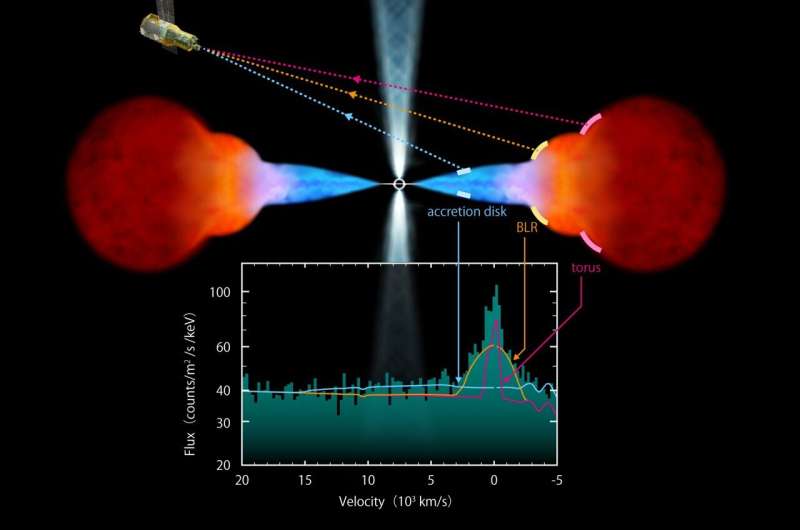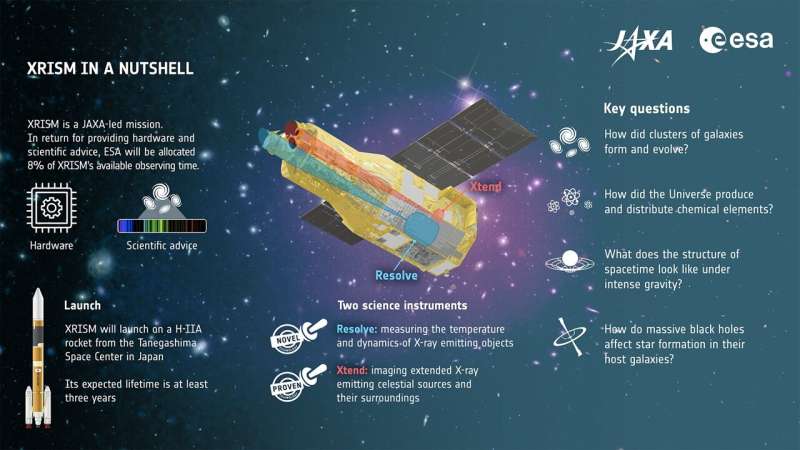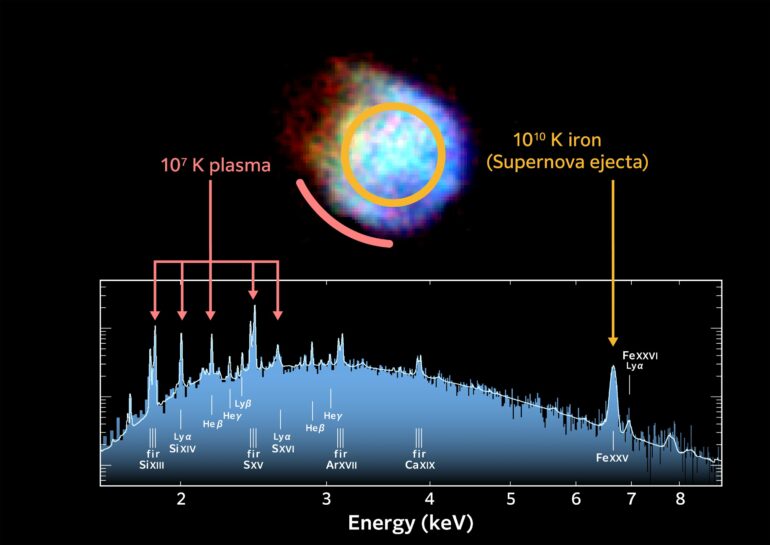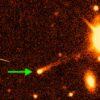The X-Ray Imaging and Spectroscopy Mission (XRISM) has revealed the structure, motion and temperature of the material around a supermassive black hole and in a supernova remnant in unprecedented detail. Astronomers presented the first scientific results of the new X-ray telescope today, less than a year after the telescope’s launch.
What do a gigantic black hole and the remains of a massive, exploded star have in common? These are both dramatic celestial phenomena where extremely hot gas produces highly energetic X-ray light that XRISM can see.
In its first published results, XRISM, a mission led by the Japan Aerospace Exploration Agency (JAXA) with participation from ESA, shows its unique capabilities to reveal the speed and temperature of sizzling hot gas, called plasma, and the three-dimensional structures of material surrounding a black hole and an exploded star.
The research is published on the arXiv preprint server.
“These new observations provide crucial information in understanding how black holes grow by capturing surrounding matter, and offer a new insight into the life and death of massive stars. They showcase the mission’s exceptional capability in exploring the high-energy universe,” says ESA XRISM Project Scientist Matteo Guainazzi.
Supernova remnant N132D
In one of its “first light” observations, XRISM focused on N132D, a supernova remnant located in the Large Magellanic Cloud about 160 000 light-years from Earth. This interstellar ‘bubble’ of hot gas was expelled by the explosion of a very massive star approximately 3000 years ago.
Using its Resolve instrument, XRISM uncovered the structure around N132D in detail. Contrary to prior assumptions of a simple spherical shell, scientists found out that the remnant of N132D is shaped like a doughnut. Using the Doppler effect, they measured the speed (velocity) at which the hot plasma in the remnant is moving towards or away from us, and established that this is expanding at the apparent speed of around 1200 km/s

JAXA’s XRISM X-ray telescope captured the distribution of matter falling into the supermassive black hole in galaxy NGC 4151 over a wide radius, spanning from 0.001 to 0.1 light-years. By determining the speed of the iron atoms from their X-rays signature, scientists have mapped out a sequence of structures surrounding the central ‘monster’: the disk closest to the black hole (in blue) where gas moves at a speed a few percent of the speed of light, followed by a transition region where gas is moving at speed of thousands of km/s and which astronomers call “the broad line region (BLR)” (in orange) , and finally the doughnut-shaped torus (in red). © JAXA
Resolve also revealed that the remnant contains iron that has an extraordinary temperature of 10 billion degrees Kelvin. The iron atoms were heated during the supernova explosion through violent shock waves spreading inwards, a phenomenon that had been predicted by theory, but never observed before.
Supernova remnants like N132D hold important clues into how stars evolve and how (heavy) elements that are essential to our life, like iron, are generated and spread out in interstellar space. Yet, previous X-ray observatories have always had difficulty revealing how the plasma’s velocity and temperature were distributed.
Supermassive black hole in galaxy NGC 4151
XRISM has also shed new light on the mysterious structure surrounding a supermassive black hole. Focusing on the spiral galaxy NGC 4151, located 62 million light-years away from us, XRISM’s observations offer an unprecedented view of the material very close to the galaxy’s central black hole, which has a mass 30 million times that of the sun.
XRISM captured the distribution of the matter circling and ultimately falling into the black hole over a wide radius, spanning from 0.001 to 0.1 light-years, that is from about a distance comparable to the sun–Uranus separation to 100 times that.
By determining the motions of iron atoms from their X-ray signature, scientists mapped out a sequence of structures surrounding the giant black hole: from the disk ‘feeding’ the black hole all the way out to the doughnut-shaped torus.
These findings provide a vital piece of the puzzle in understanding how black holes grow by gobbling up surrounding matter.
Although radio and infrared observations have revealed the presence of a doughnut-shaped torus around black holes in other galaxies, XRISM’s spectroscopic technique is the first, and currently only way to track down how the gas near the central ‘monster’ is shaped and moves.

XRISM will study the Universe in X-ray light with an unprecedented combination of light collecting power and energy resolution – the capability to distinguish X-rays of different energies. The mission will provide a picture of the dynamics in galaxy clusters, the chemical make-up of the Universe and the flow of matter around accreting supermassive black holes (Active Galactic Nuclei or AGN), among many other topics. © European Space Agency
Looking ahead: Future observations and discoveries
In the last months, the XRISM science team has diligently worked on establishing the instruments’ performance and refine the data analysis methods by observing 60 key targets. In parallel,104 new set of observations were selected from the over 300 proposed submissions from scientists worldwide.
XRISM will conduct observations based on the successful proposals over the next year; thanks to its exceptional performance in orbit, surpassing even initial expectations, this promises many more exciting discoveries to come.
More information:
, The XRISM First Light Observation: Velocity Structure and Thermal Properties of the Supernova Remnant N132D, arXiv (2024). DOI: 10.48550/arxiv.2408.14301
Provided by
European Space Agency
Citation:
X-Ray Imaging and Spectroscopy Mission unveils black hole and supernova remnant surroundings (2024, September 20)



